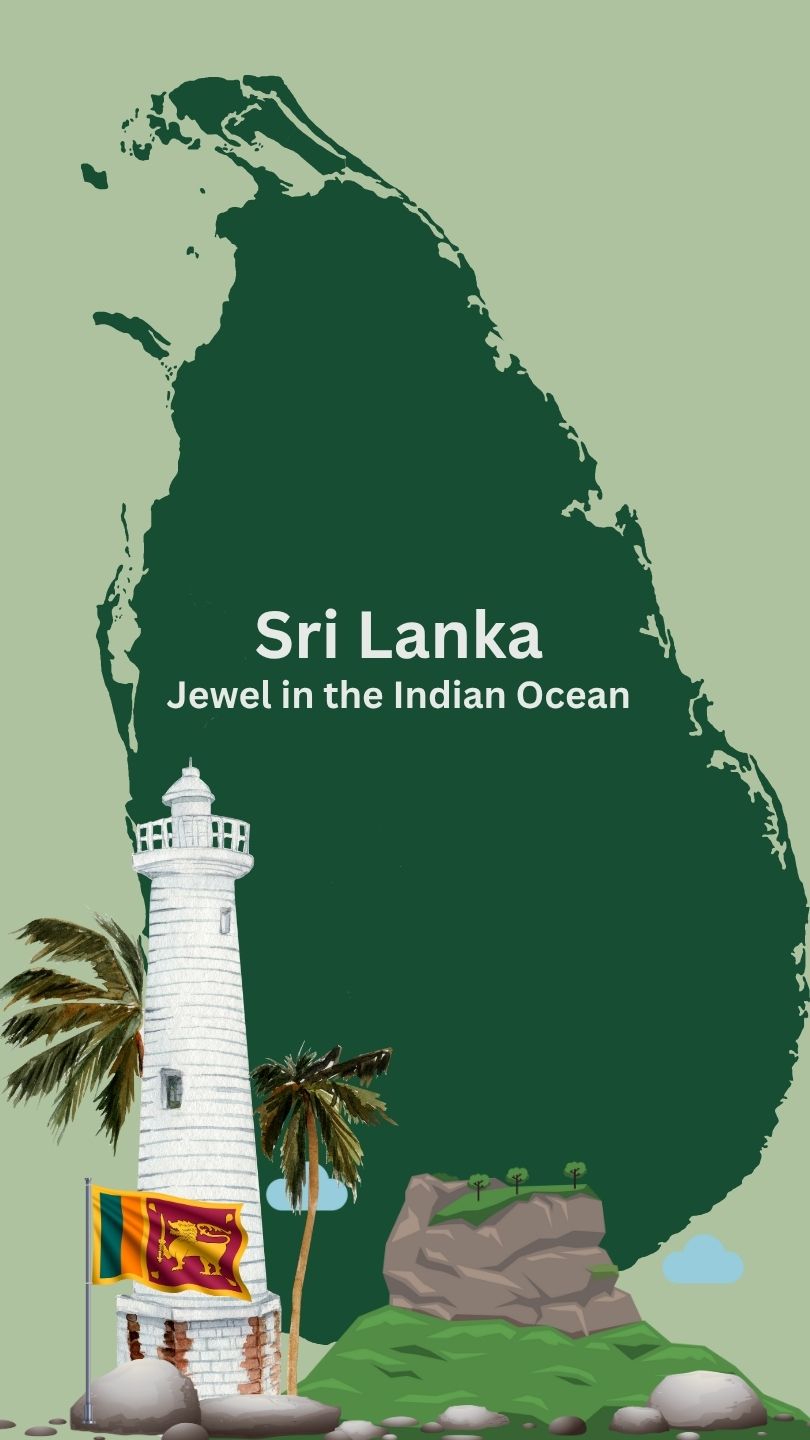The Avifauna of Sri Lanka's Mangrove Ecosystems
Part 1

E.M Amandhi Nirukshila Ekanayake
Undergraduate, B.Sc. (Hons) in Fisheries and Marine Science, Faculty of Fisheries and Ocean Sciences, Ocean University of Sri Lanka.
Sri Lanka, a jewel in the Indian Ocean, is recognized as a global biodiversity hotspot, an ecological status amplified by its rich and varied wetland ecosystems. Among these, the coastal mangrove forests stand out as a critical nexus of terrestrial and aquatic life. These unique environments, where saline ocean water and freshwater meet to create a brackish realm, provide indispensable services that support a vast array of wildlife, including marine organisms, reptiles, amphibians, and mammals. Sri Lanka’s mangroves – about 16,000 hectares (160 km²) of swamp forests along the coast harbor vibrant biodiversity. Sri Lankan mangrove-associated birds are widely distributed across lagoons, estuaries, and tidal wetlands. These interconnected habitats form a continuous mosaic where mangrove forests meet brackish waters, mudflats, and tidal creeks.
Birds do not remain confined to dense mangrove stands; instead, they spread across the entire lagoon–estuarine landscape, using different zones according to their ecological needs. As breeding and foraging grounds for fish and crustaceans, mangroves indirectly support a dazzling array of waterbirds. Wading birds and water birds are common and noticeable top predators in mangroves. A group of birds known as wading birds (herons, egrets) is frequently observed wading along mudflats, and shorelines, in between mangrove root areas in search of food. They can move around and stay stable in the muddied waters because of their long, slender legs and flexible toes. Their necks are usually long but strong, and they frequently have lengthy bills with different specialized forms for different foraging techniques.
In Sri Lanka’s wetlands, “waterbirds permanently reside or temporarily utilize wetlands as they provide diverse microhabitats for feeding, nesting, resting, and roosting”. Indeed, coastal mangroves offer roosting sites and rich mudflats that fish-eating and wading bird’s exploit. The characteristics of these microhabitats can influence the behavioral choices of different birds. Vegetation structure, prey availability, predator density, and water depth influence bird habitat selection. Under the behavioral ecology, there are 4 main key concepts. Adaptation refers to behaviors that evolved to increase an organism’s fitness. It is ability to both survive and reproduction in specific or unique habitats. In the mangrove ecosystem, both water and wading birds exhibit various behaviors to face with the challenges. Social behavior is the interaction between individuals of the same species. Communication involves the use of signals and cues to convey information between individuals. (mating calls, warning calls). Movement ecology studies how organisms navigate and utilize different elements of their environment to move.
Coastal mangroves harbor many wading and waterbird species characteristic of the "wet-tropical zone".
Several herons and egrets utilize mangroves. Grey Heron (Ardea cinerea, LC) and Purple Heron (Ardea purpurea, LC) catch fish and frogs around creek edges, occasionally nesting in mangrove trees. Smaller egrets (Intermediate Egret Ardea intermedia, Little Egret Egretta garzetta, Cattle Egret Bubulcus ibis; all LC) forage in among roots and mud. Night-herons (Black-crowned Night Heron Nycticorax nycticorax, LC; Indian Pond Heron Ardeola grayii, LC) roost under mangrove cover by day. These ardeids are generally colonial breeders in islets or trees over water and serve as significant apex predators in wetland food webs. (General waterbird ecology is represented in Sri Lankan wetlands.
Long-billed ibises probe soft mud while foraging.). The Glossy Ibis (Plegadis falcinellus, LC) was rare formerly as a winter visitor but has been recorded regularly in recent counts. It feeds on insects, crustaceans and small fish in the mudflats. Black-headed Ibis (Threskiornis melanocephalus, LC) also occurs in mangrove creeks, using its long decurved bill to catch frogs and crabs. Both species breed commonly in tall-mangrove trees together with storks. Eurasian Spoonbill (Platalea leucorodia, LC) is a seasonal migrator that wanders into mangrove shallows, swooping its bill for fish.
Large storks and pelicans use mangrove lagoons predominantly. Painted Stork (Mycteria leucocephala, LC) is a common breeding visitor; wetland islets and dense mangroves are ideal nesting habitat (often in association with other storks). It forages by wading in shallow water and seizing fish in its long bill. Spot-billed Pelican (Pelecanus philippensis, NT) is restricted to South Asian wetlands.
- The cormorants are powerful foot-propelled divers. They lack preen oils, those substances which water resistant the feathers of most birds. This seemingly disadvantageous feature is a valuable adaptation, for it allows their feathers to waterlog. This reduces their buoyancy, which aids them in diving deeper and better pursuing fish beneath the water. They sit with their wings spread wide after a fishing trip to dry their feathers. Because they are effective hunters, cormorants are generally piscivorous, i.e., fish-eaters. They use their hooked bill to capture and hold their prey. They are opportunistic feeders and hunt school or bottom-dwelling fish species most readily accessible. Darters are thinner and longer than cormorants, with a highly kinked very long neck and a straight pointed dagger bill without a hook. They are predominantly dark with silvery markings on the wings. They get their name from the way they hunt. They have a unique hinge between the eighth and ninth vertebrae of their neck. This allows it to rapidly thrust its head and bill forward to stab at its prey, in a spear-like manner. When swimming with their bodies submerged and only the long neck and head exposed above the water, they appear like a serpent, and are therefore nicknamed “snakebird.” As with cormorants, darters also possess water-repellent feathers and spend most of their time drying their wings after diving into the water.
Kingfishers are a striking and conspicuous component of mangrove bird community. The most common ones, seen ubiquitously, are the White-throated Kingfisher (Halcyon smyrnensis), and Stork-billed Kingfisher (Pelargopsis capensis).

Sub-Habitats of Mangrove Ecosystems
Mangrove ecosystems are not monotonous forests but rather mosaics of structurally diverse sub-habitats created by tidal cycles, salinity gradients, and vegetation structure. Each microhabitat is inhabited by distinct groups of water birds and wading birds in Sri Lanka.
- Mud flat; These are shallow expanses of fine sediment exposed at low tide, often at the seaward edge of mangroves. They are filled with benthic invertebrates such as worms, mollusks, and crustaceans.
- Tidal creeks; Mangrove creeks are cut by tidal creek networks, carrying nutrient-rich water and fish fry with tidal inflow and outflow. Herons and Egrets (Grey Heron, Little Egret, Night Heron) roost along creek edges, swooping on fish and crabs. Kingfishers (Common Kingfisher, Collared Kingfisher) roost on mangrove roots, plunging into creeks to snatch tiny fish.
- Mangrove canopy; Tall mangroves such as Rhizophora, Avicennia, and Sonneratia have an upper canopy with shade and cover. Painted Stork, Black-headed Ibis, and Spot-billed Pelican create nesting colonies in tall mangrove trees. Herons, egrets, and cormorants roost in canopy branches in large flocks, sheltered from ground predators.



Specialized Foraging Strategies: Adapting to the Tides
Wading birds, such as herons and egrets, employ a variety of specialized foraging techniques to navigate the shallow, root-choked waters and exploit the concentrated prey base. They often stalk their prey with a slow, deliberate gait or actively disturb the water with their feet to flush out small fish, crustaceans, and mollusks. The dense root systems provide abundant ambush points and a consistent supply of prey.
Piscivorous species, like kingfishers, demonstrate a different suite of adaptations. These birds possess exceptional binocular vision and a remarkable ability to compensate for the refraction of light in water, allowing them to accurately locate prey from a perch and plunge-dive with precision. Their dagger-like bills are perfectly evolved for spearing and holding fish. The Brahminy Kite, a diurnal raptor, utilizes a more aerial hunting strategy, soaring over the water to locate and seize dead fish and crabs from the surface. A truly remarkable and specific adaptation is found in the Asian Openbill, whose beak has a unique gap that it uses to extract large snails, a staple of its diet, from their shells. This variety of highly specialized feeding behaviors demonstrates a direct connection between the physical structure of the mangrove habitat and the evolutionary pressures that have shaped the birds that inhabit it.
Nesting and Roosting Ecology: The Canopy as Sanctuary
Mangrove trees are not only a source of food but also a critical haven, providing elevated and secure nesting and social roosting habitats. The dense canopy and complex root and branch system create a critical land predator refuge, thereby increasing egg and juvenile survival. Many herons, egrets, and storks form massive nesting colonies, or rookeries, in mangrove canopy. In one example, a male Great Egret chooses a display location on a shrub or a tree, often over water, where it begins to build a platform nest out of sticks before soliciting a female to help finish the structure. The Brahminy Kite is another species that builds its stick and leaf nest in mangrove trees, where there is remarkable site fidelity and reuse of the same nest site from year to year. Habitat with all its special difficulties and opportunities has served as a crucible for the co-evolution of these species, and the physical environment plays an active role in the behavioral ecology of its bird community.

- Shallow Swamps and Pools; Permanent or seasonal waterlogged depressions are formed behind mangroves, which are typically dense in aquatic vegetation.
- Brush Piles in Open Water; Brush piles (locally referred to as “brush parks”) are deliberately placed in open water by fisher people in most Sri Lankan estuaries and coastal lagoons as fish aggregating devices (FADs). These structures are built from branches, coconut leaves, or mangrove offcuts placed together and weighed to the bottom of the lagoon. These act as refuges for fish and invertebrates, which make it easier for the fishers to harvest them. The artificial structures also create beneficial microhabitats for birds.

The mangrove stands of Sri Lanka are more than avian habitat. they are a significantly co-adapted, highly biologically complicated entity that with local and global ecological services is fundamentally supportive. Evidence of high and diverse avifauna with the conjunction of resident specialist and necessary migratory visitors is conclusive proof of habitat productivity and vitality. The physically and physiologically superior characteristics of the mangrove vegetational species, from their highly sophisticated root structure through specialized breeding tactics, produce conditions that support dense food web and necessary shelter for hundreds of species.
